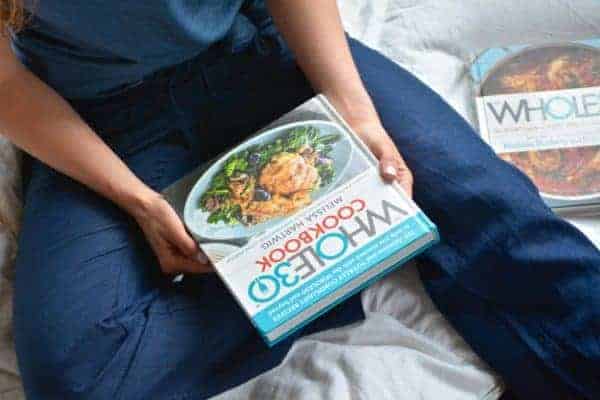
What is the Whole30?
The Whole30 is pretty much what it sounds like – 30 days of eating whole foods. The program, created by Melissa Hartwig & Dallas Hartwig, has a set of firm ground rules that guide the way you eat. It’s not a prescribed diet per se, but rather a template into which you plug the allowed foods to create your meals and snacks. Here we show 18 Dietitian-Approved Whole30 Meals.
The Whole30 has received some serious criticism from dietitians and other health professionals for being too rigid and for its exclusion of grains and dairy. Which is exactly why we wanted to share our thoughts on the Whole30 program. We’ve each done a few rounds of Whole30 and each time we’ve learned something about ourselves while improving our eating habits, our sleep, our complexion and our outlook on life. And we’ve then taken what we learned after the program to create a way of eating that’s unique to our needs that allows each of us to feel our best.
Think that sounds too good to be true? It isn’t. But this also isn’t a quick fix program designed to change a lifetime of destructive behaviors overnight. Nor is it meant to be a lifelong eating plan. It’s 30 days of super clean eating combined with self-care and self-discipline that can change the way you look at (and eat) food for better. You can learn more about the Whole30 here.
What the Whole30 isn’t.
- It isn’t a quick fix. The Whole30 isn’t meant to be a weight loss diet and nor is it meant to be used in a serial fashion before or after every beach vacation or when you feel like you’ve been ‘bad’ over the holidays. It is helpful in helping you create new habits – like eating regular meals, cooking more at home vs. hitting the drive-thru, bringing your attention to mindless snacking or late night dessert fests. Think of it like this: It’s a 30-day experiment where you are the only subject. An n=1 situation. You remove some confounding variables (gluten, soy, sugar, alcohol, dairy, etc.) that may be having an effect on your health. You assess how you feel physically and mentally (did your brain fog lift? why are you still craving sugar every afternoon? does your skin look clearer?) then you add back the foods you took out, one at a time and assess their effects on your health and mood. All told, the Whole30 actually takes about 45 days to do it ‘right’ with a 30-day elimination period and a 2-week (or longer) reintroduction. Just as if you were doing an elimination diet to determine if food X was causing symptom Y.
- It isn’t meant to be used long-term. Please don’t even think about doing a Whole -45, -60, -90, or -180. It’s most effective when used as an elimination diet with a thorough and well-planned reintroduction period so you figure out which foods don’t make you feel your best. Do the reintroduction period correctly, collect the data and move on. Use what you learned about to help shape your diet and behaviors surrounding food going forward. But please, don’t restrict yourself from something that doesn’t make you feel awful just because it doesn’t meet Whole30 criteria.
- The Whole30 isn’t designed to ‘cure’ your food issues. It’s helpful in helping you uncover issues you might have but it’s not going to cure them. Sometimes bringing attention to something is enough to help you make a change – for example, you always pass the office break room at 2:30 pm and there is always (insert tempting food here) in there and you always stop for a piece because that’s what you always do. Being aware of the habit means you can change your route or you can look the other or you can just decide that that is not a behavior that serves you. But if you’ve got something bigger going on like binge eating, using food as a reward or punishment, tying your value to what you eat or didn’t eat then you must seek help from a professional skilled in helping you with these issues. The Whole30 can’t fix them but it can help you see areas of weakness that need addressing.
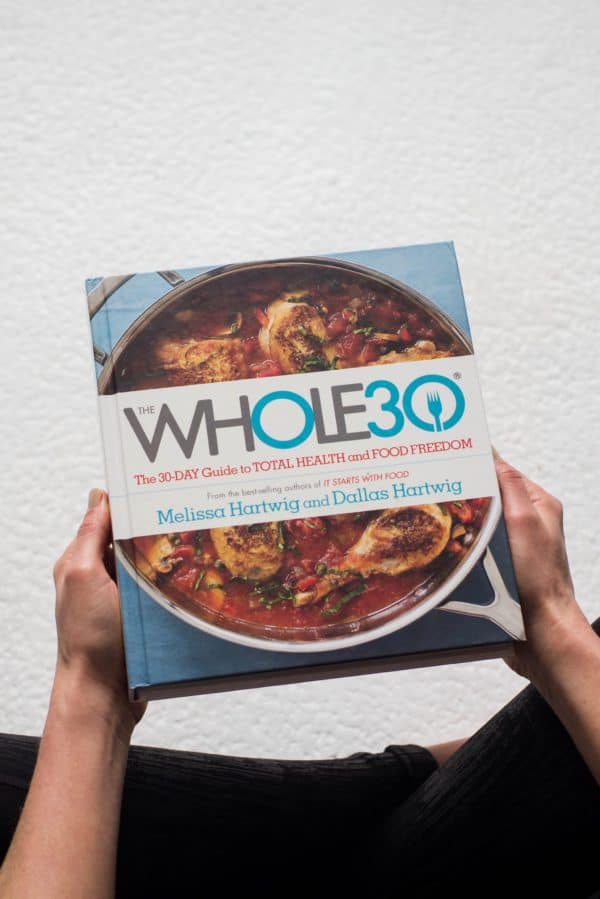
Dietitians Thoughts on Whole30 program:
- It’s not forever. It’s 30 days. And you can do pretty much anything for 30 days. You can live without grains, dairy, sugar, chocolate, and alcohol for 30 days. You may not love it at first but it’s physiologically possible. And it’s not as harmful to do so as some opponents would lead you to believe. Just do yourself a favor and do a thorough Reintroduction so you can use that data to move forward and craft the most liberal and varied diet that still allows you to feel great.
- It’s not designed for weight loss. When you walk away from a diet that’s high in processed foods and turn instead to a diet of whole or minimally-processed food, most people will lose some weight. Often it’s in the form of water weight in the beginning, but as your 30 days continue weight loss is often a ‘side effect’ of a Whole30 done right.
- When done right, it’s a balanced way of eating. By ‘done right’ we mean 30 days of whole foods combined into meals and snacks that are heavy on the plant matter (veggies and fruit) with meat, fats and nuts/seeds used more like enhancements to the meal – not the main focus.
- It brings your attention to food quality. “Quality over quantity” should be the Whole30 mantra because when you feed your body the foods it needs, you don’t need to eat as much or all the extras. The non-stop snacking or grazing pretty much goes away when you eat balanced meals based on vegetables, protein, and fat. The Whole30 also promotes the use of the most sustainable and clean foods your budget can afford. This isn’t elitism, it’s conscious eating – choosing foods whose production methods are easier on the environment while offering up more nutrition in the form of vitamins, minerals, and important fatty acids also help you steer clear of mass-produced and highly-refined foods that may be preventing you from reaching your health goals. But if you just can’t afford it, don’t sweat it. Do the best you can with what you have – the point is to eat more unprocessed, whole foods whether they be organic/pastured/free-range/grass-fed/wild-caught/biodynamic, etc.
- Opens up your food world and expands your palate. This pretty much goes hand in hand with the previous point. When you ditch the processed packaged foods, grains and dairy you leave some space in your diet to try new foods. The Whole30 community is great at sharing new food finds and approved recipes – many of which are heavy on the vegetables or use vegetables in ways that you’ve never thought of (zoodles, anyone?) Another side benefit of passing on hyper-palatable processed foods is that your tastes buds change. Literally. You get new tastebuds daily and the further into your Whole30 you get, the greater your ability to appreciate subtle nuances of flavor in foods that you previously never noticed. And fruit tastes sweeter and more satisfying when you’re not used to everything being super sweet.
- It helps you recognize food cravings (and why you might have them). Doing a Whole30 may not cure you of your sugar or fatty food cravings permanently but it can help decrease them for a couple of reasons: 1) Sugar, fried foods and other highly-processed and somewhat addictive foods like ice cream, candy, energy drinks, onion rings, chips, cookies, and other baked goods just aren’t allowed, 2) after a period of abstinence from a certain food you tend to lose interest in it. This, of course, takes some time and ‘skill-power’ to keep you away from the food until it becomes less appealing, and 3) when you feed your body wholesome and nourishing foods that provide ample calories, protein, fat, and micronutrients while balancing your blood sugars, you have fewer physiological cravings for certain foods. The ‘mental’ cravings can also be lessened by consuming a balanced, super clean diet though we’ve found that coupling diet with self-care activities like exercise, journaling, meditation and time outdoors helps improve the likelihood of squelching food cravings. Now, will you be cured of the chocolate craving? Doubtful, but chances are good you’ll have a much easier time handling cravings when they come up again (and may be better able to head them off at the pass or enjoy just enough the food to satisfy the craving).
- It can help you identify food sensitivities. If you suspect that a sensitivity to gluten, dairy, soy or other foods are to blame for poor digestion, fatigue, headaches, acne, joint pain, etc. then a Whole30 is a great way to eliminate these common irritants or allergens and allow your body to heal. After 30 days you can slowly reintroduce each food to monitor for a return of symptoms. Critics of the Whole30 often cite the elimination of entire groups of food as being unnecessarily restrictive but we disagree. As dietitians, we’ve been using elimination diets with our clients for years to help them improve their health and uncover hidden food sensitivities.
- It’s hard. You have to commit 100%. We’re not going to sugar-coat anything here, doing a Whole30 is hard. But it’s not impossible. With the right mindset (“This isn’t forever”, “My health is important”, “I deserved to feel my best”) and some advance planning, you can successfully complete a Whole30. Keep in mind though that you have to commit 100% to get the most out of the program. There are no cheats or shortcuts. Failing to stick to your guns will give you sub-par results and won’t help you tame cravings or discover which foods make you feel like a rockstar. Remember, this is your chance to collect data for the most important health experiment ever: You.
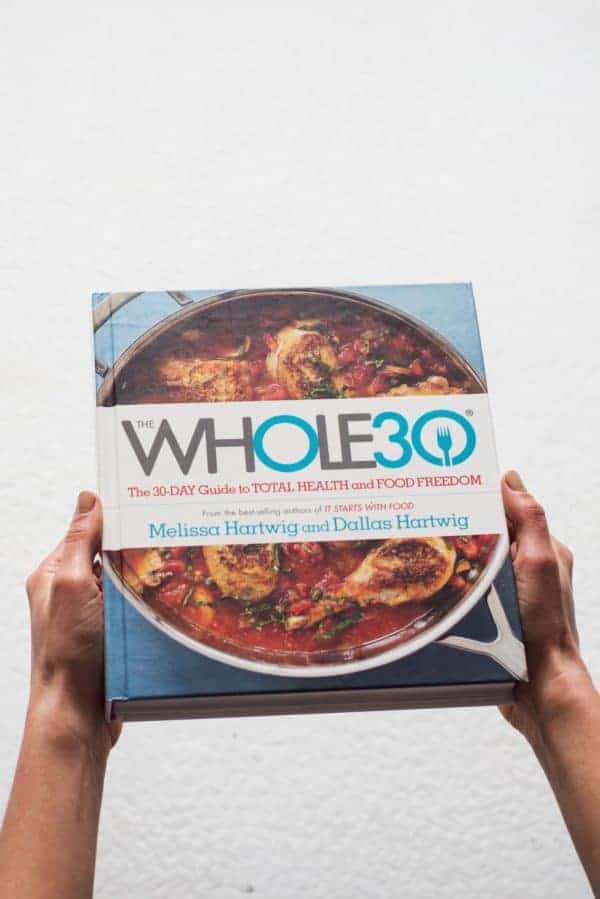
Is the Whole30 for you?
The Whole30 can safely be done by just about everyone. However, you need to be committed. You need to have a greater desire to improve your health than to continue consuming food and drinks that are keeping you bloated, tired and stuck. If you’re willing to set aside grains, dairy, soy, sugar, alcohol, legumes, baked goods, and other treats or trigger foods for 30 days then you’re a pretty good candidate for a Whole30. If you’re also willing to put some extra time and planning into your meals and snacks, then you’re even better suited for a Whole30. If you take that one step further and commit to sticking to your guns at parties, happy hours and other social situations for the next month, then it’s safe to say that your chances of successfully completing a Whole30 have gone up substantially.
Who the Whole30 isn’t for:
- History of disordered eating. If you have a history of any kind of disordered eating or food addiction, the Whole30 is not for you. We agree with the program creators that the program rules can worsen disordered or restrictive eating so we can’t recommend the Whole30 to anyone in this situation.
- Looking for a quick fix. As we mentioned earlier, the Whole30 isn’t a quick fix or a weight loss program. It’s 30 days of committed and planned eating. You’ve gotta work for your results and sometimes, even 30 days isn’t enough to reset or relieve nagging health issues like acne, bloating, poor digestion or fatigue. Sometimes you have to go longer and keep evaluating what’s working and what isn’t. So if it’s a quick fix you’re looking for, keep looking. This isn’t it.
Click here to read our top tips for thriving on a Whole30
- You follow a strict vegan diet. It’s not that you can’t do a Whole30 as a vegan but it is significantly more difficult as the program does encourage animal products to provide adequate fat and protein. With the removal of grains, legumes, and soy it’s difficult to get enough protein to meet your body’s needs. In addition, though the program does encourage the use of humanely and sustainably raised animal products it definitely advocates for the inclusion of meat and poultry – so not likely a good fit for a strict vegan.
Interested in doing your own Whole30?
We recommend picking up a copy of It Starts with Food or the Whole30 to get you started. Or just drop by Whole30.com to browse all of the free resources available there.
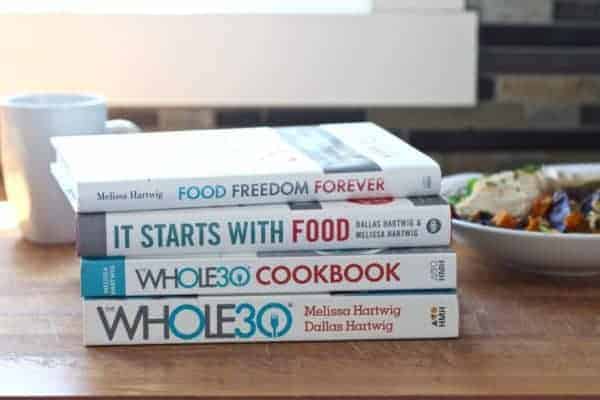
Pin it!
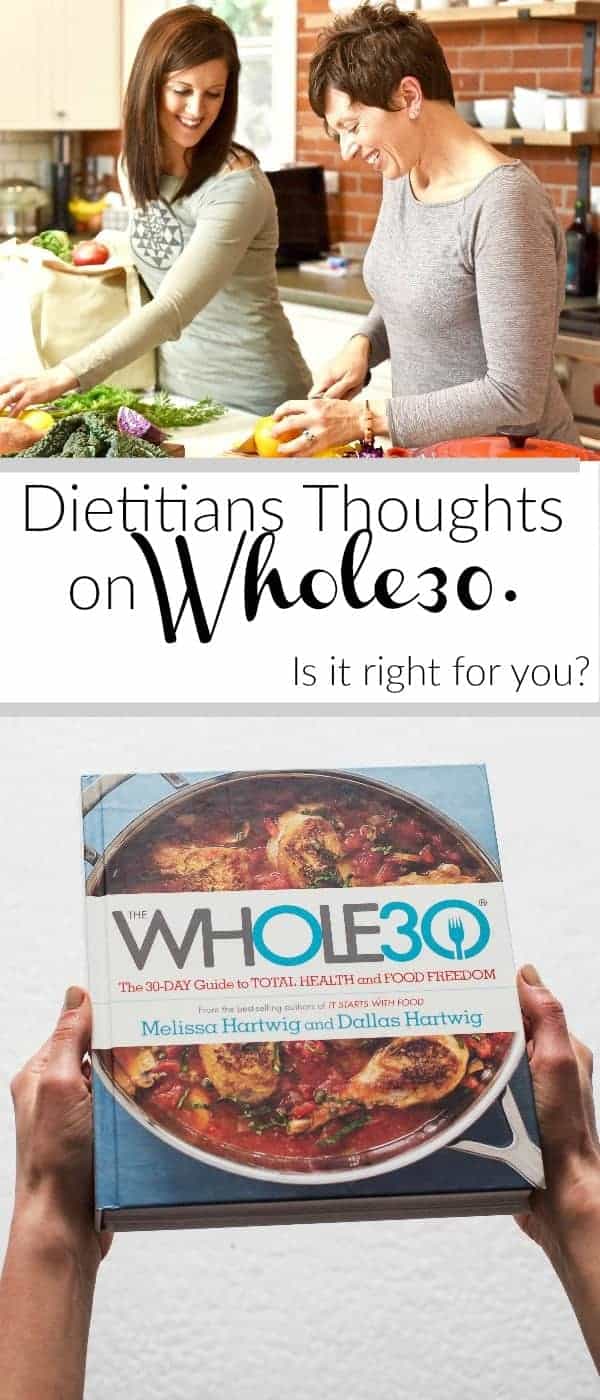
The information shared in this Dietitians Thoughts on Whole30 post is based solely on our own opinions and experiences. We have received no compensation of any kind from Whole30 or it’s partners in the creation of this post.
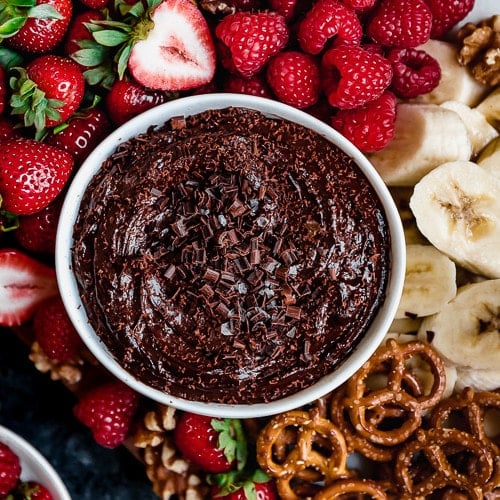
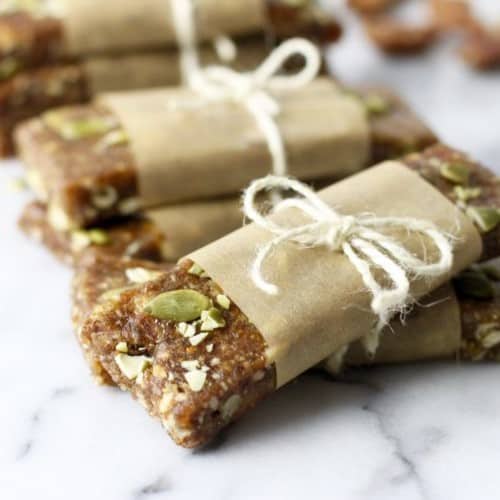
Any diet that excludes healthy foods like grains, legumes and dairy is not a good diet even for 30 days. Have you done any actual scientific research on this diet?
Hi Gin,
While the Whole30 does exclude grains, legumes and dairy for 30 days it is no more restrictive than the standard elimination diet that is used to rule out food allergies and sensitivities. The elimination diet is still considered to be the gold standard for identifying food sensitivities and intolerances and is something I’ve used in my private practice (and outpatient hospital practice) with clients and patients for many years. Like the elimination diet, the Whole30 is not intended for long-term use. Following the 10-14 day reintroduction phase the goal is liberalize the diet as much as possible to include the greatest variety of foods tolerable to that person to ensure adequate intake of macronutrients, micronutrients and phytonutrients.
We support the use of the Whole30 program as a way for individuals to determine if there are foods they are sensitive to or intolerant of when oversight by a trained professional is not warranted (as would be the case with eating disorders and other serious health conditions).
I successfully completed my first whole 30 in January! I lost 12 pounds during the month and felt GREAT! After about the first week, I did not have any cravings and I was actually surprised at how easy it was to follow the rules of the program. I’ve tried several diets in the past – as well as counting calories and making better choices but nothing worked with helping me get rid of some of this weight. I am just wondering what the risks would be to continue eating Whole 30 for more than the 30 days? Aside from being overweight, I am in good health (no blood pressure/cholesterol/heart/etc. concerns). I can’t imagine excluding dairy, wheat, and sugar from my daily diet would be terrible for me.
Hi Amy,
The Whole30 way of eating will provide you with an adequate source of nutrients that you need so you can continue to follow it for longer than the 30 days if you wish. We just encourage that you focus on eating lots of veggies and that it’s well-balanced. Sounds like you have had great success…congrats! 🙂
Hi-
I am considering doing Whole30 and doing research now.
My concern is that I have seen some posts of people whose bad cholesterol has gone up after Whole 30.
Mine is borderline high now.
Thoughts?
Hi Debbie,
Honestly, this can go either way depending on your current health, diet, lifestyle, genetics, age, gender, etc. Essentially, we all react to dietary fats differently. Also, just because your LDL (or ‘bad’ cholesterol’) goes up – that doesn’t give you the full picture. You also need to see what happens to total cholesterol, HDL and particle size (small dense vs. large fluffy molecules). I suggest speaking with your healthcare provider about testing before and after, your risk factors, etc. before starting a Whole30 if you have any concerns at all.